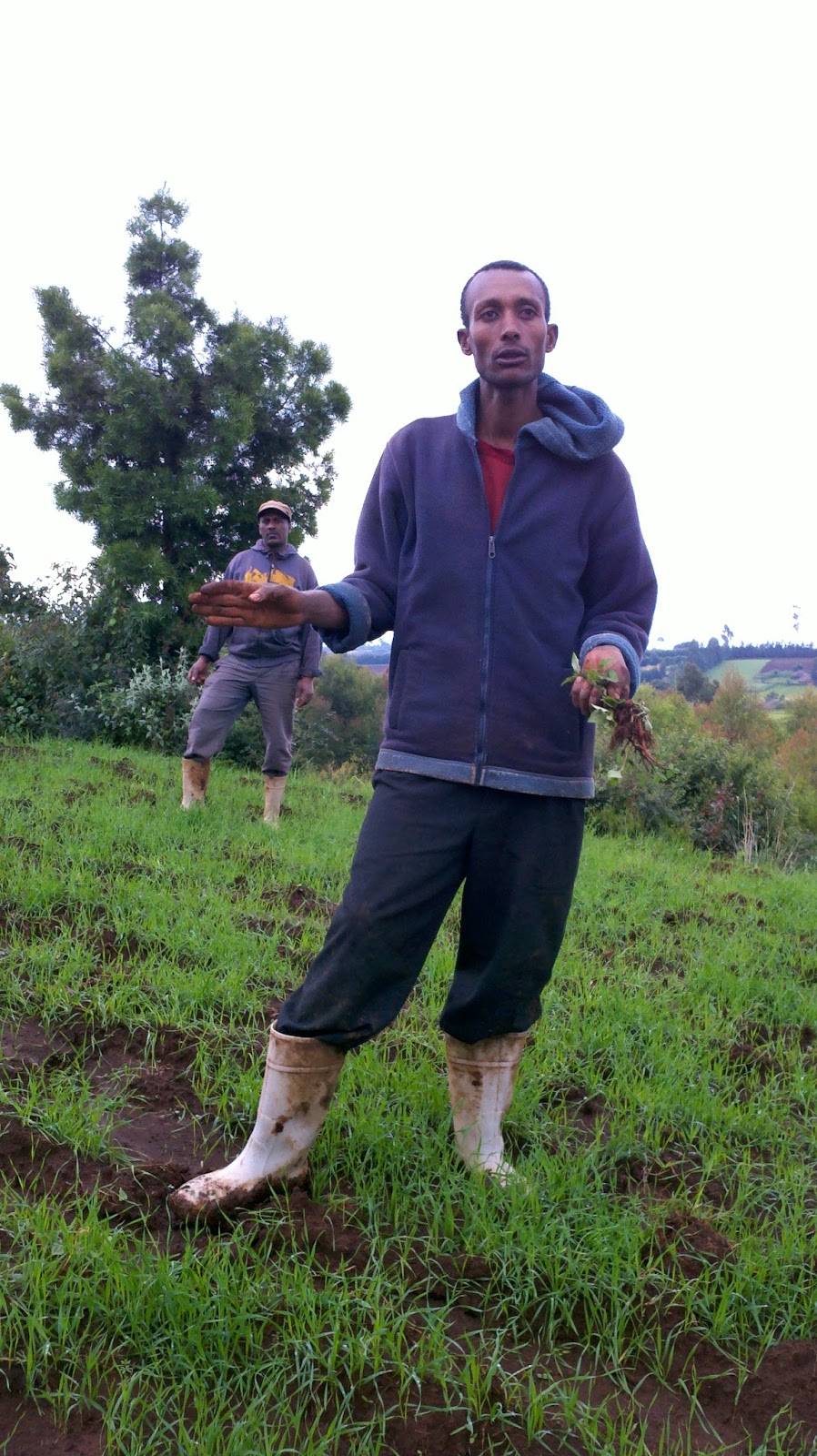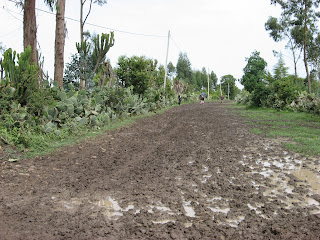So a bit of context on input credit in Ethiopia. For the last few
years, there has been limited (and in some regions, no) input credit available
for farmers. Input credit is very risky since you’re lending without collateral
to farmers who could have a crop disaster any year. Also, Ethiopia is
experiencing a liquidity crunch (because of a major import-export disparity and
the government now working to slow inflation) and smallholder farmers have not
been as high of a priority for credit as the major infrastructure projects (the
giant hydroelectric dam that is upsetting Egypt…though now they have their own
issues, the light rail system in Addis, road construction, etc.).
Turns out, a lack of input credit significantly decreases the
adoption (number of farmers using inputs) and the intensity (amount of inputs
being used) of input use. Shocking, I know. Input credit was in part limited
because of low repayment rates. The old system had several issues that led to
low repayment rates, including the following:
·
Loan diversion – farmers using credit for other things.
·
Regional governments provide guarantee but do not have collections
responsibility, even though they are guaranteeing the loans.
·
Collection on loans takes place through multiple sets of interactions
(primary cooperatives collecting from farmers, cooperatives unions collecting
from primary cooperatives, etc.) so ultimately responsibility for collections
is diffused throughout value chain and funds can be misappropriated.
·
In case of default, Commercial Bank of Ethiopia (CBE) is paid
fully by regional governments, reducing incentive for CBE to apply collections
pressure throughout the value chain.
We designed a new system to be pilot this year (and hopefully be
expanded nationally next year) to provide input credit while limiting these
risks. The new system channels credit through microfinance institutions (MFIs)
because they have local presence and historically low default rates (farmer
loan groups are one of the ways they keep default low). This keeps the
cooperatives out of the credit distribution/collection process. We have also
replaced the cash in the system with a voucher, which prevents farmer loan
diversion and cooperative cash misappropriation. Over time, regional government
loan guarantees will be phased out and replaced by a partial credit guarantee
fund.
Everyone asleep now? Bueller? Bueller?
Alright, enough context; picture time.
OCSSCO (MFI that serves 90%+ of Oromia region) branch office in
Gassera.
Farmers at one of the primary cooperatives in Gassera being
instructed by the MFI about the credit they are about to receive.
Hey, I have those boots.
Farmers waiting for their turn to sign all the paperwork (there’s
a lot of paperwork; definitely too much).
While the farmers were waiting, we interviewed some of them about
input credit and how it affects the amount of inputs they use. One guy, Mulatu,
spoke pretty good English, so needless to say, I spent a lot of time talking
with him. He’s the second guy from the right. He’s two or three years into a
sublease on a couple hectares of land from some family (all land is originally
leased from the government, so everything else is a sublease).
People signing paperwork; I know, super exciting right :)
The manager of the primary cooperative.
Due to some…let’s say “issues,” the inputs weren’t distributed
until the next day. You’ve got to feel bad for the farmers who had to sit
around for the better part of two days just to get fertilizer (improved seed wasn't available at the primary cooperative, which is a whole other can of
worms, aka problems).
The next day came with, you guessed it, more paperwork!
The farmers are organized into groups of about five who are all
responsible for each other’s loans. Then, all the groups from a primary
cooperative meet together monthly to lend support and peer pressure. At the
monthly meeting, everyone also has to bring a small amount of money to add to a
savings account opened in their name at the MFI. This way, farmers are getting
training and experience in overall financial literacy (not just in taking
loans). The larger group decides the penalties for tardiness or absence at a
monthly meeting, which is what they are discussing in this picture.
After the paperwork was all done, it started to rain, so we hung
around for a while before distributing fertilizer. Maybe the largest umbrella
I’ve ever seen.
Fertilizer!
A bunch of the fertilizer was caked, which happens when it gets
too wet either from rain or too much humidity. This makes the DAP really hard
to use and the Urea absolutely worthless. This led to several heated
discussions and a trip to the woreda agricultural office to talk with the
cooperative promotion office. Each woreda (think county) has a cooperative
promotion office, which is the part of the office responsible for the
performance and training of the woreda cooperative union and primary
cooperatives. Anyway, long story short, more training is needed (as you might
expect, some of the trainings from different organizations contradict each
other).
Why is the fertilizer caked, you ask? Well, first of all, the
country orders way too much so it sits around for 1-2 years. Secondly, the
pictures below show the warehouses being used to store the fertilizer. The
first one is essentially a big basket (pretty easy for rain to get in). The
second one is a metal shed (which in the sun is probably going to make it pretty
hot and humid inside).
Fertilizer delivery system.
Ewenetu, one of the analysts on my team, is on the left. Morkema,
the representative from OCSSCO headquarters in Addis, is on the right. Major
props to both for putting up with me for five days.
Head of the Gassera cooperative promotion office.
The store at the primary cooperative. We went to several primary
cooperatives, and each of them has a store that sells consumer goods. This is
because the government has made the margins so small on fertilizer that they
don’t even cover the cooperatives’ costs. They have to sell consumer goods (and
misappropriate money) just to keep things running. In case you’re wondering,
yes, the cooperative is selling some kind of Teletubbies biscuits.
In Tiyo, where planting had already happened a few weeks ago, we
interviewed some farmers, the cooperatives, and the MFI branch office. We went
to visit one of the farmer’s fields with him. He talked to us about planting
and how input credit had changed his input use. I love that as soon as he got
to the field, he started weeding. No reason to waste the time he was talking to
us not working.
Until next week...
























































